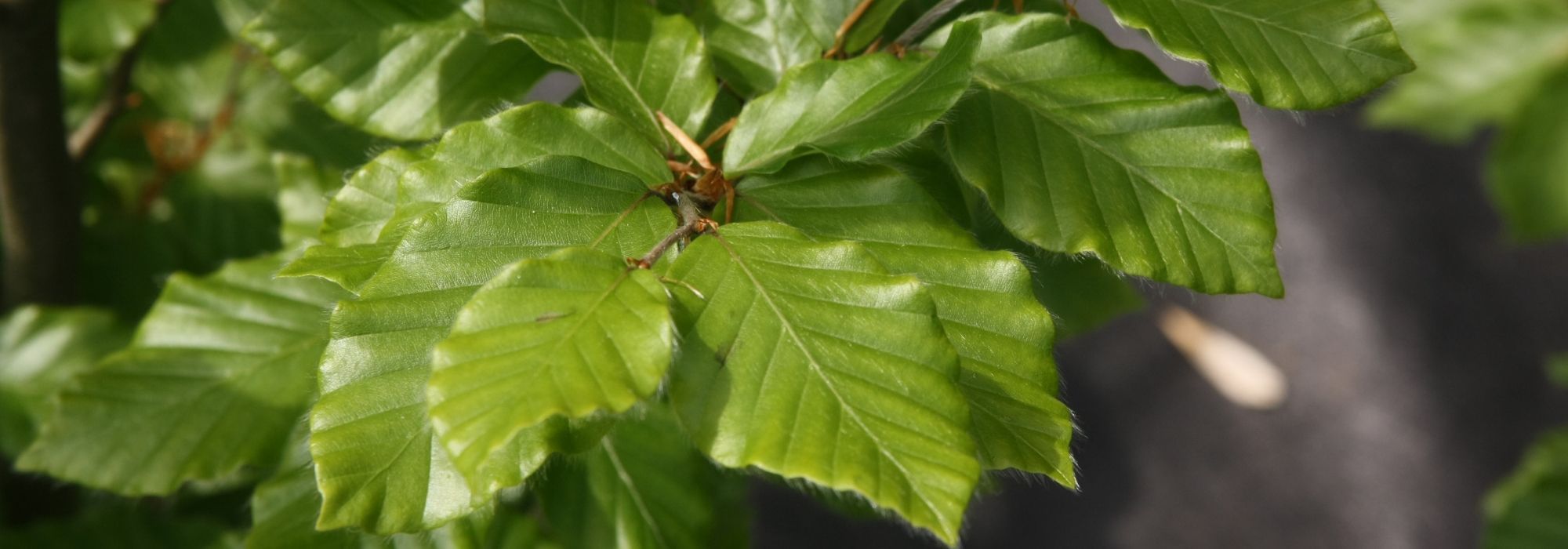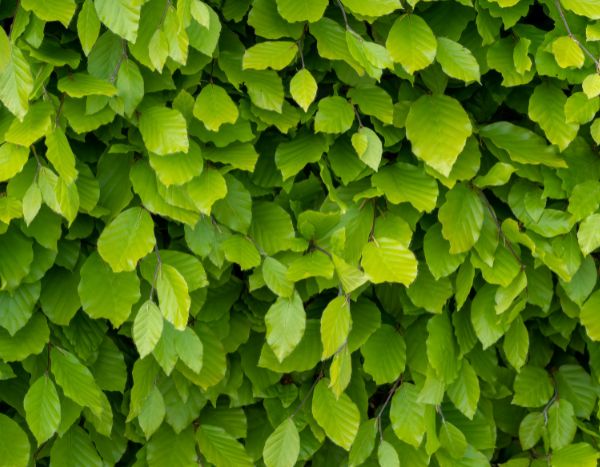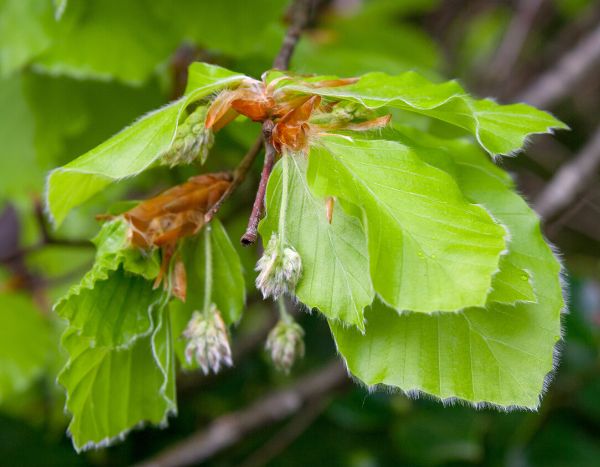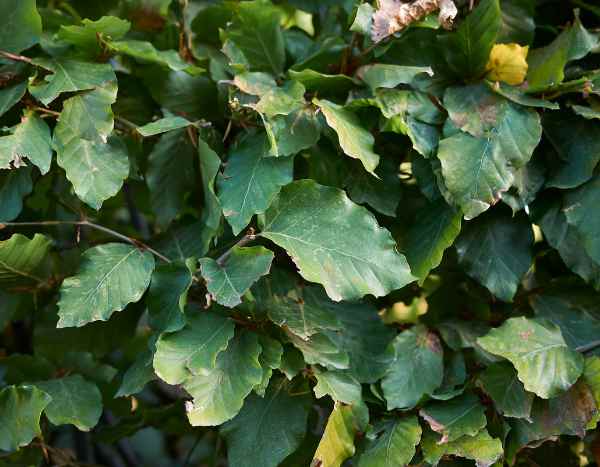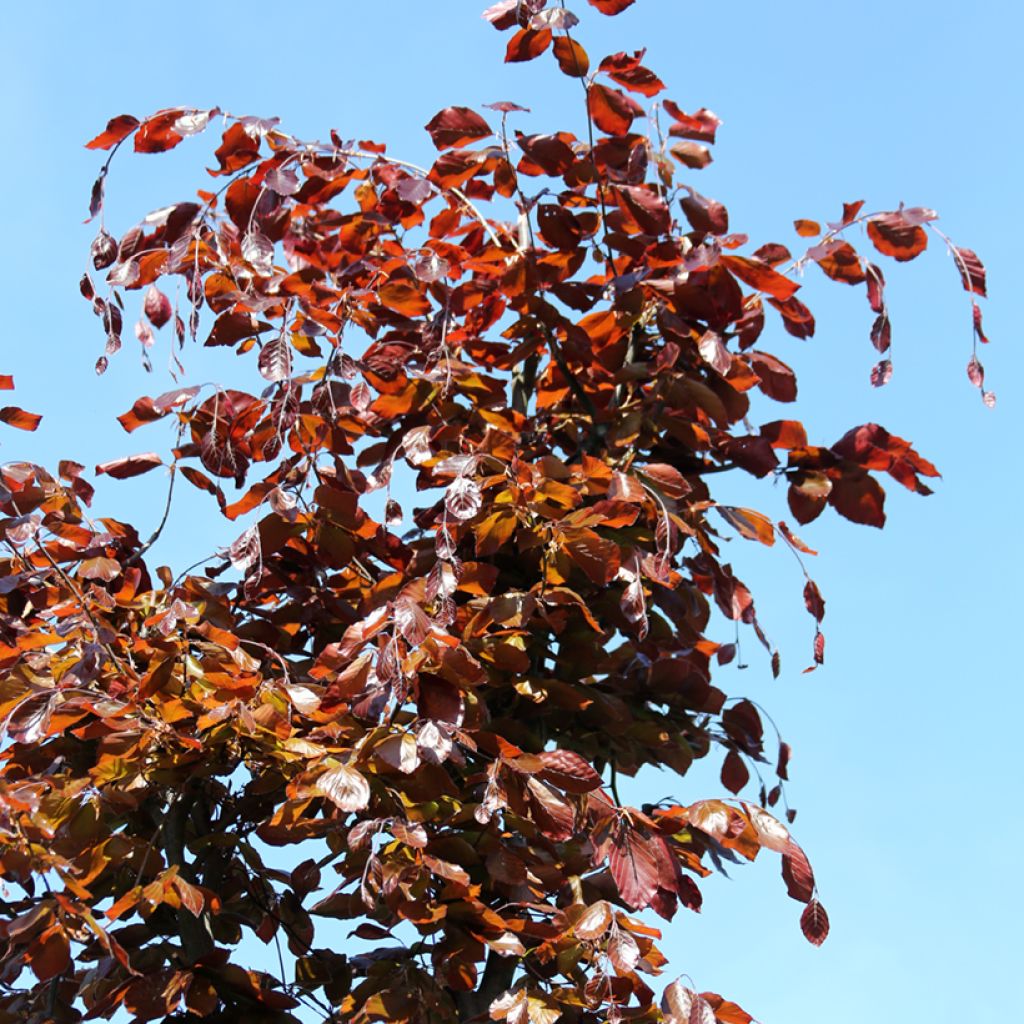

Fagus sylvatica Swat Magret
Fagus sylvatica Swat Magret
Fagus sylvatica Swat Magret
European Beech, Common Beech
Special offer!
Receive a €20 voucher for any order over €90 (excluding delivery costs, credit notes, and plastic-free options)!
1- Add your favorite plants to your cart.
2- Once you have reached €90, confirm your order (you can even choose the delivery date!).
3- As soon as your order is shipped, you will receive an email containing your voucher code, valid for 3 months (90 days).
Your voucher is unique and can only be used once, for any order with a minimum value of €20, excluding delivery costs.
Can be combined with other current offers, non-divisible and non-refundable.
Home or relay delivery (depending on size and destination)
Schedule delivery date,
and select date in basket
This plant carries a 24 months recovery warranty
More information
We guarantee the quality of our plants for a full growing cycle, and will replace at our expense any plant that fails to recover under normal climatic and planting conditions.
Would this plant suit my garden?
Set up your Plantfit profile →
Description
Fagus sylvatica 'Swat Magret' is a historic variety of Beech with very dark purple foliage. It forms a large tree whose presence is matched only by its longevity. Its trunk with smooth grey bark supports a majestic crown, with a pyramidal or rounded habit. Its foliage consists of elliptical, very dark purple leaves during the season, reflecting metallic hues due to their glossy surface. Able to reach heights of over 20m, this Beech is intended for large plots of land that can accommodate its growth without restriction. It will be magnificent as a solitary tree on a lawn or in the background of a flower bed.
The Beech or Fagus is a member of the small family of Fagaceae, which owes its name to it, and includes only seven to nine genera, including the large group of Oaks (Quercus) and the Common Chestnut (Castanea sativa). There are only about ten species within the genus Fagus, with F. sylvatica being the common Beech and undoubtedly one of its most beautiful specimens. This large forest tree can reach a height of 30m, with a powerful straight trunk reaching 2m in diameter, and covered with a beautiful smooth grey bark, very ornamental in the rain. It is adorned with glossy dark green foliage, which is usually marcescent (meaning it persists on the tree in winter before falling). With relatively slow growth, it usually forms imposing forests in cool and humid climates. Horticultural varieties are quite diverse, affecting both the habit of the plant (dwarf, fastigiate, weeping, etc.) and the colour of the foliage (golden, purple, variegated, etc.).
'Swat Magret' is a very old horticultural variety, selected by the breeder Frahm in northern Germany in Elmshorn, in the heart of the largest nursery area in Europe (Pinneberg basin, just north of Hamburg), and introduced to the market as early as 1895. This Beech has a moderate annual growth rate, around 50cm in height and 40cm in width. In 10 years, it will reach approximately 7m in height and 5m in width, and at maturity, up to 22m in height and 15m in width. It is therefore suitable for large spaces and demonstrates great longevity, with a lifespan of 300 years or more, unfortunately now somewhat theoretical due to climate change. Depending on the specimens, the overall habit is conical to pyramidal, in either case, the tree's silhouette is admirable, with well-balanced proportions, justifying its planting as a solitary tree. In spring, the young leaves appear earlier than in the species, they are tinted with reddish-purple and darken as they mature, taking on a dark purple that has been so popular for over a century. The elliptical leaves borne on short petioles are larger than those of the botanical species, measuring 10cm or more in length and 7cm or more in width. Their edges are wavy and their surface has a waxy cuticle that gives them a glossy appearance, with almost metallic reflections. In autumn, the foliage lightens slightly, turning burgundy, and persists on the tree for a long time, unless the wind blows after a frost.
The tree blooms in April-May, but the very small yellow-green flowers have no ornamental interest, nor do the brown fruits, called beech nuts, which follow and ripen in September-October. On the other hand, the very smooth, beautiful light grey bark, is ornamental, especially in rainy weather, which enhances its beautiful colour.
Fagus sylvatica 'Swat Magret' is one of those varieties intended to form large specimens in parks and large gardens. Plant it as a solitary tree on a large lawn, alongside other trees with colourful foliage, particularly golden ones, such as Gleditsia triacanthos 'Sunburst', an American Honey Locust without the dangerous thorns of the species, but just as graceful with its finely divided leaflets. Its summer flowering is discreet but nectar-rich. For a similar contrast, with the advantage of a more ornamental and fragrant flowering, Robinia pseudoacacia 'Frisia' is also a very good choice. In slightly acidic soil, you can opt for Liquidambar styraciflua, whose dimensions can rival those of your Beech. The American Sweetgum will create a permanent colour contrast with its beautiful palmate green leaves in the season, which turn purple, red, and orange in autumn.
Fagus sylvatica Swat Magret in pictures
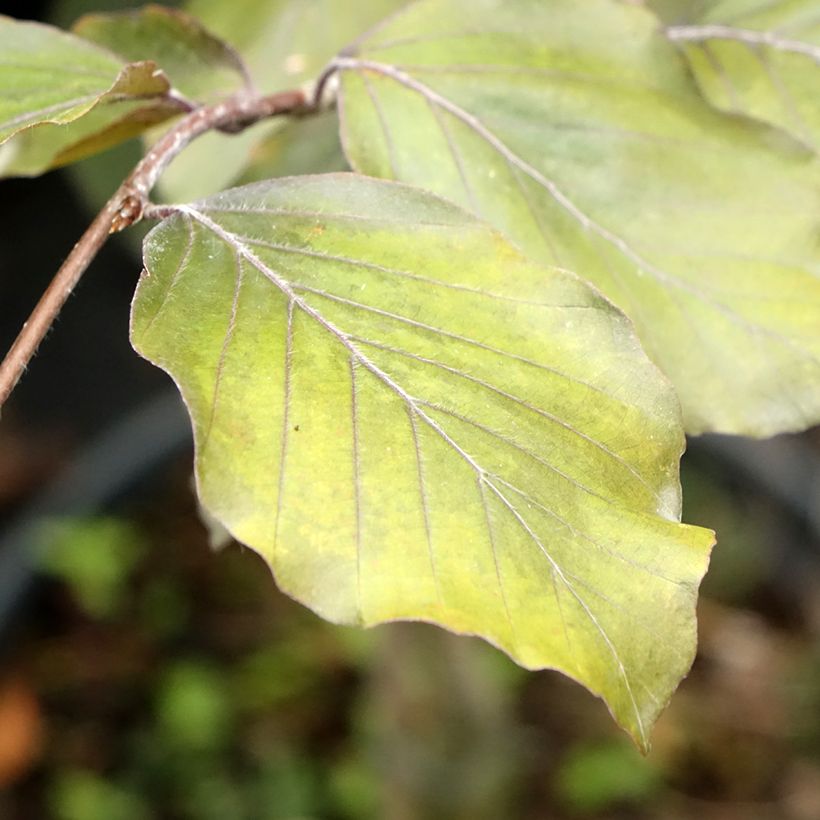

Plant habit
Flowering
Foliage
Botanical data
Fagus
sylvatica
Swat Magret
Fagaceae
European Beech, Common Beech
Cultivar or hybrid
Planting and care
Fagus sylvatica 'Swat Magret' thrives in sunny to partially shaded locations (which, considering its adult dimensions, is uncommon...). It prefers to grow in cool climates, even cold ones, tolerating freezing temperatures down to -30°C. It requires a certain level of atmospheric humidity, not tolerating drought, as well as a rich, moist soil that is well-drained as it does not appreciate stagnant water. It adapts to the majority of soil types, ranging from limestone to slightly acidic soils, preferably rich in humus. Soak the root ball in a bucket of water for twenty minutes before planting and during this time, dig a hole with sides and bottom measuring 60 cm. Add planting compost to the existing soil, position the root ball so that the top is level with the surrounding soil, fill in around it and water thoroughly. Preferably plant in autumn to benefit from winter rains. Maintain regular watering during the first two years, and during dry periods thereafter. In February-March, when the tree is dormant, remove any crossing or unwanted branches.
Planting period
Intended location
Care
Planting & care advice
This item has not been reviewed yet - be the first to leave a review about it.
Haven't found what you were looking for?
Hardiness is the lowest winter temperature a plant can endure without suffering serious damage or even dying. However, hardiness is affected by location (a sheltered area, such as a patio), protection (winter cover) and soil type (hardiness is improved by well-drained soil).

Photo Sharing Terms & Conditions
In order to encourage gardeners to interact and share their experiences, Promesse de fleurs offers various media enabling content to be uploaded onto its Site - in particular via the ‘Photo sharing’ module.
The User agrees to refrain from:
- Posting any content that is illegal, prejudicial, insulting, racist, inciteful to hatred, revisionist, contrary to public decency, that infringes on privacy or on the privacy rights of third parties, in particular the publicity rights of persons and goods, intellectual property rights, or the right to privacy.
- Submitting content on behalf of a third party;
- Impersonate the identity of a third party and/or publish any personal information about a third party;
In general, the User undertakes to refrain from any unethical behaviour.
All Content (in particular text, comments, files, images, photos, videos, creative works, etc.), which may be subject to property or intellectual property rights, image or other private rights, shall remain the property of the User, subject to the limited rights granted by the terms of the licence granted by Promesse de fleurs as stated below. Users are at liberty to publish or not to publish such Content on the Site, notably via the ‘Photo Sharing’ facility, and accept that this Content shall be made public and freely accessible, notably on the Internet.
Users further acknowledge, undertake to have ,and guarantee that they hold all necessary rights and permissions to publish such material on the Site, in particular with regard to the legislation in force pertaining to any privacy, property, intellectual property, image, or contractual rights, or rights of any other nature. By publishing such Content on the Site, Users acknowledge accepting full liability as publishers of the Content within the meaning of the law, and grant Promesse de fleurs, free of charge, an inclusive, worldwide licence for the said Content for the entire duration of its publication, including all reproduction, representation, up/downloading, displaying, performing, transmission, and storage rights.
Users also grant permission for their name to be linked to the Content and accept that this link may not always be made available.
By engaging in posting material, Users consent to their Content becoming automatically accessible on the Internet, in particular on other sites and/or blogs and/or web pages of the Promesse de fleurs site, including in particular social pages and the Promesse de fleurs catalogue.
Users may secure the removal of entrusted content free of charge by issuing a simple request via our contact form.
The flowering period indicated on our website applies to countries and regions located in USDA zone 8 (France, the United Kingdom, Ireland, the Netherlands, etc.)
It will vary according to where you live:
- In zones 9 to 10 (Italy, Spain, Greece, etc.), flowering will occur about 2 to 4 weeks earlier.
- In zones 6 to 7 (Germany, Poland, Slovenia, and lower mountainous regions), flowering will be delayed by 2 to 3 weeks.
- In zone 5 (Central Europe, Scandinavia), blooming will be delayed by 3 to 5 weeks.
In temperate climates, pruning of spring-flowering shrubs (forsythia, spireas, etc.) should be done just after flowering.
Pruning of summer-flowering shrubs (Indian Lilac, Perovskia, etc.) can be done in winter or spring.
In cold regions as well as with frost-sensitive plants, avoid pruning too early when severe frosts may still occur.
The planting period indicated on our website applies to countries and regions located in USDA zone 8 (France, United Kingdom, Ireland, Netherlands).
It will vary according to where you live:
- In Mediterranean zones (Marseille, Madrid, Milan, etc.), autumn and winter are the best planting periods.
- In continental zones (Strasbourg, Munich, Vienna, etc.), delay planting by 2 to 3 weeks in spring and bring it forward by 2 to 4 weeks in autumn.
- In mountainous regions (the Alps, Pyrenees, Carpathians, etc.), it is best to plant in late spring (May-June) or late summer (August-September).
The harvesting period indicated on our website applies to countries and regions in USDA zone 8 (France, England, Ireland, the Netherlands).
In colder areas (Scandinavia, Poland, Austria...) fruit and vegetable harvests are likely to be delayed by 3-4 weeks.
In warmer areas (Italy, Spain, Greece, etc.), harvesting will probably take place earlier, depending on weather conditions.
The sowing periods indicated on our website apply to countries and regions within USDA Zone 8 (France, UK, Ireland, Netherlands).
In colder areas (Scandinavia, Poland, Austria...), delay any outdoor sowing by 3-4 weeks, or sow under glass.
In warmer climes (Italy, Spain, Greece, etc.), bring outdoor sowing forward by a few weeks.






























